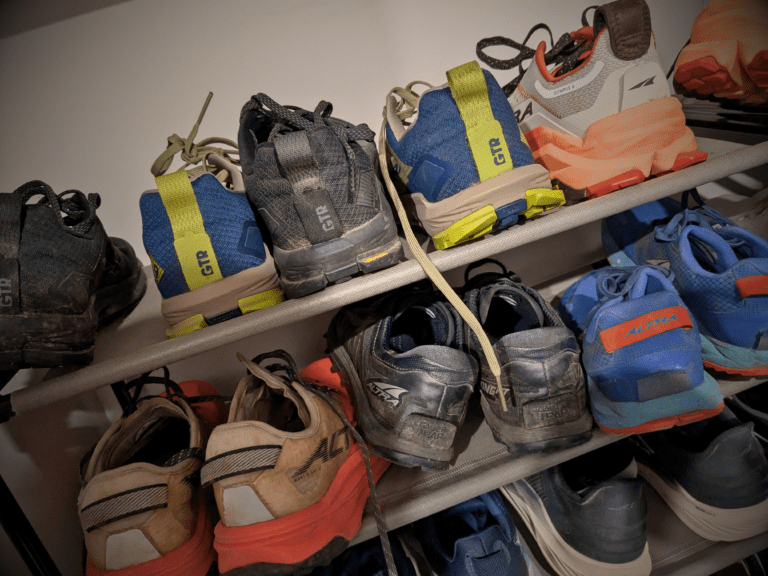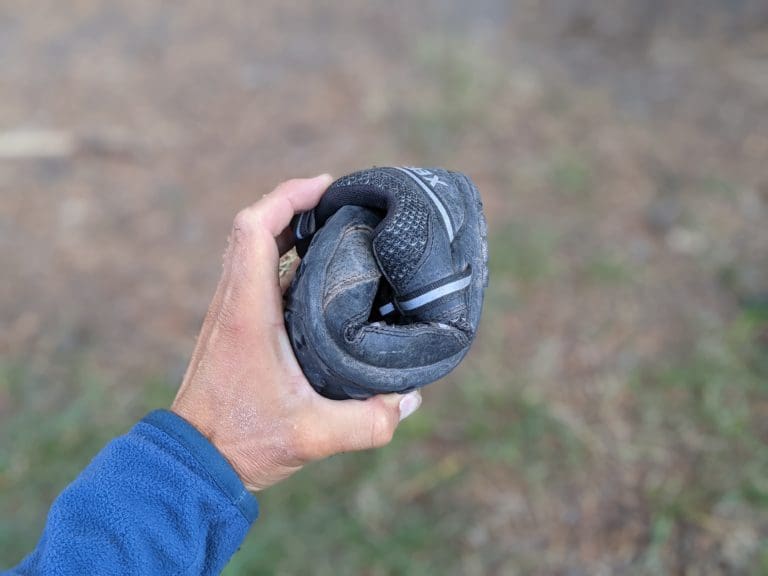In this post, I will introduce you to five of the best minimalist trail running shoe options, each of which excels uniquely. I have personally used some of them while running ultra-marathons, and some are regular staples in my running rotation. Thus, my experience can help you determine if any of these options work for you.
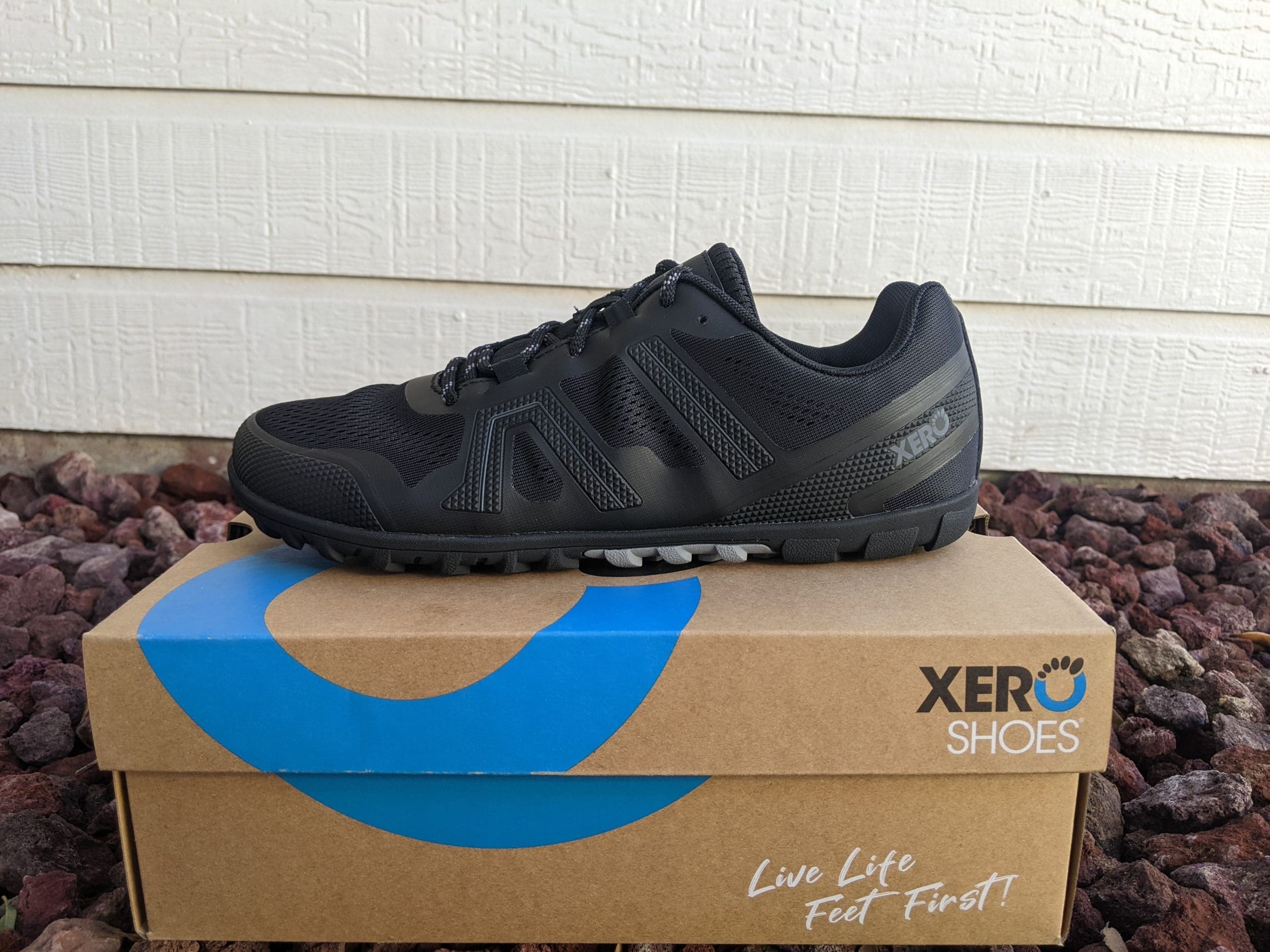
Xero Shoes Mesa Trail II
Best Barefoot Feel
Lightweight design
Great ground feel
Flexible outsole
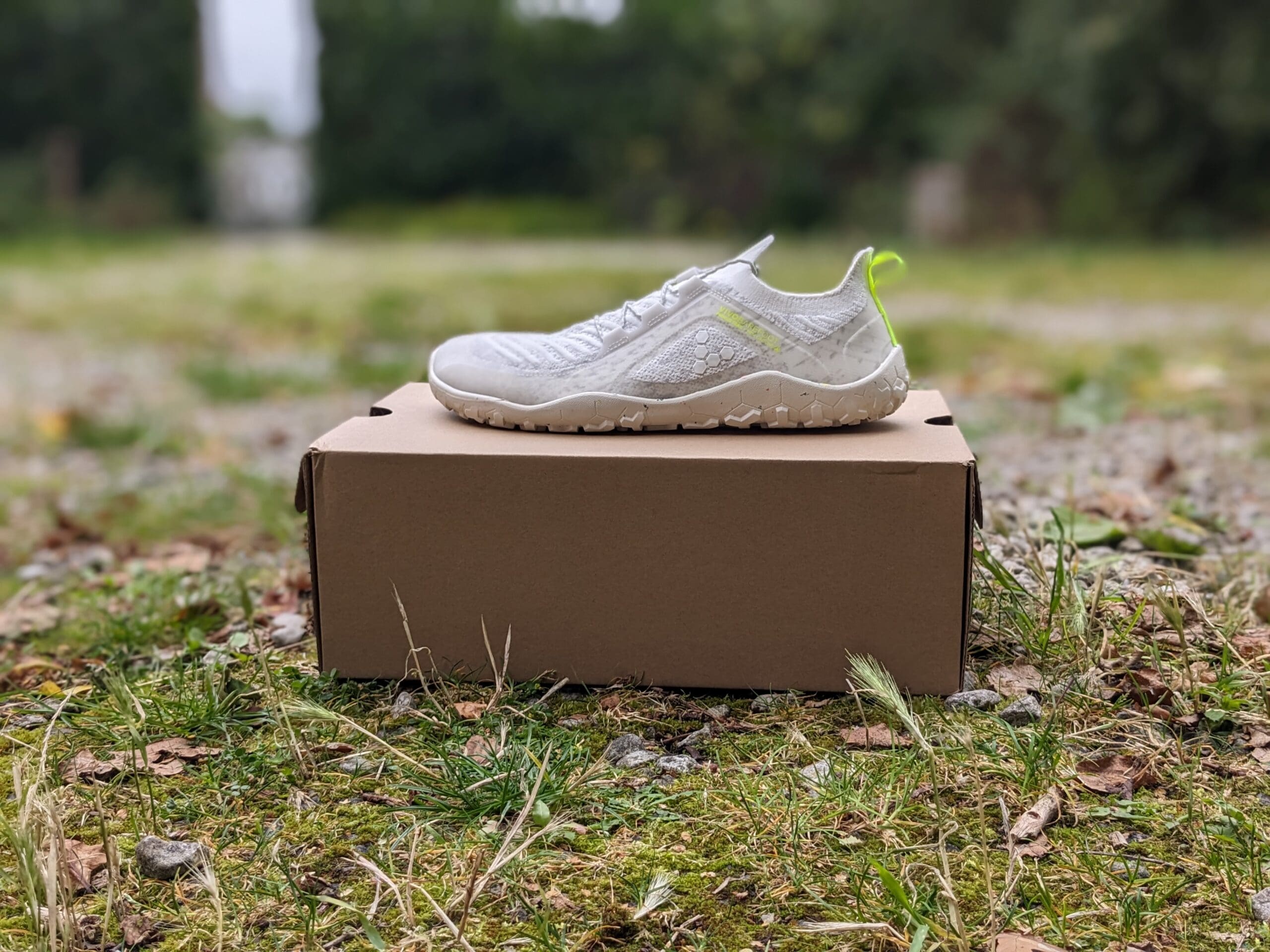
Vivobarefoot Primus Trail FG
Best For Low Volume Feet
Wide toe box
Good ground feel
Low volume design
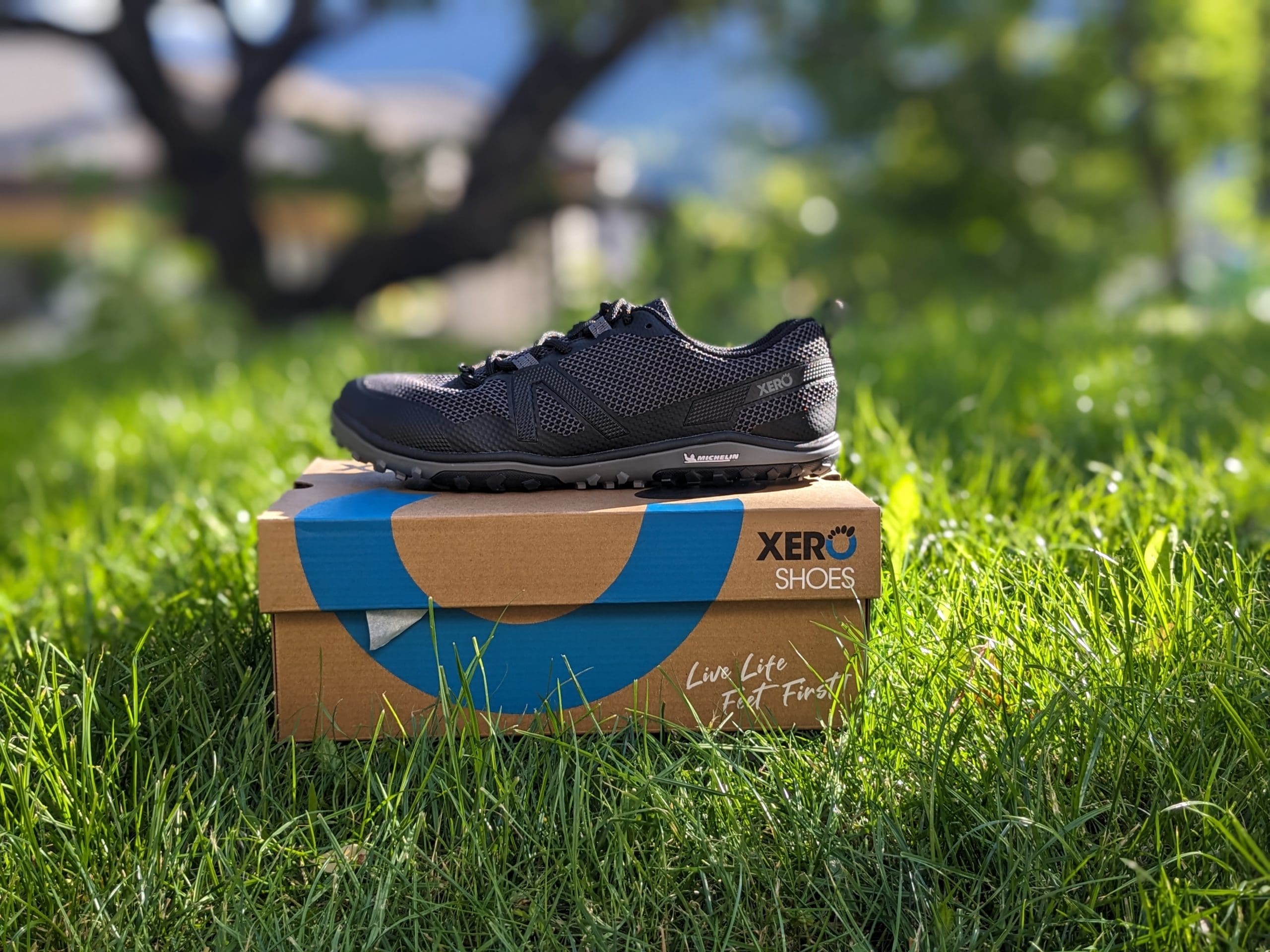
Xero Shoes Scrambler Low
Best for Muddy Conditions
Excellent grip
Great protection
Comfortable upper
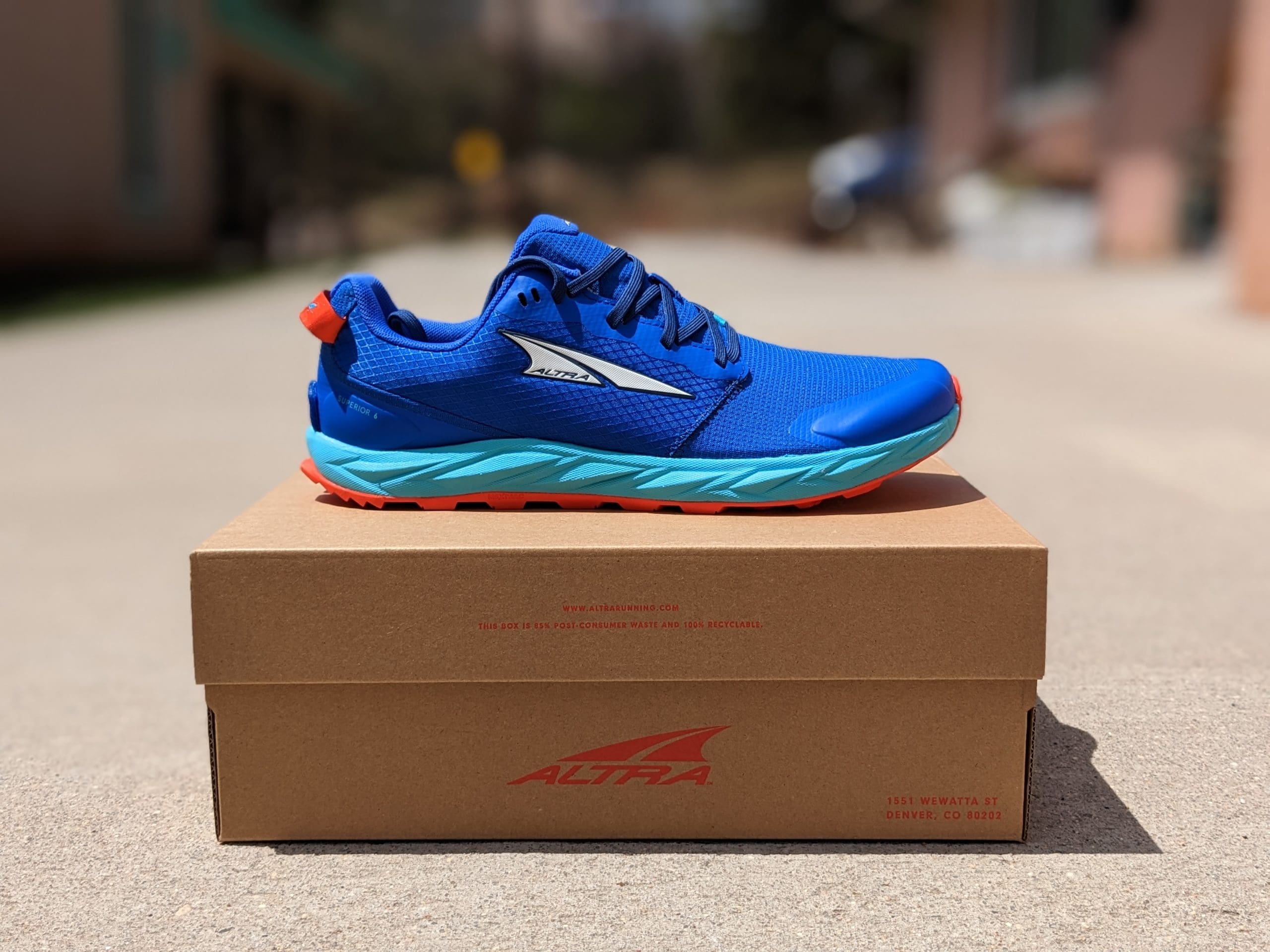
Altra Superior 6
Best Barefoot With Cushion
Balance of cushion
Good grip on wet rocks
Wide toe box

Earth Runners Circadian
When Freedom Matters
Barefoot feel improves gait
Versatile
Great strap design
Affiliate Disclosure: By clicking through the links on this page and purchasing the products, you’ll be helping me out. This is done because I receive a kickback from the sellers at no extra cost to you! Thank you so much for supporting us!
If there was one barefoot trail shoe I had to use for the rest of time, it’d be the Mesa Trail II.
They are lightweight; they have a ton of ground feel, but still, just enough protection to take the edge off any missteps you may make.

Pros
Cons
The outsole bends in all different directions. When you run barefoot, your foot doesn’t just bend at the toes. It moves in various directions, including front-to-back, side-to-side, and torsionally like a screw. Some manufacturers of minimal shoes overlook this fact and only add flexibility to the ball of the foot. Instead, the Mesa Trail shoe incorporates flexibility throughout the entire shoe.
The upper overlays are strong enough to lock the foot in place and flexible enough to allow proper foot function. When jumping from side to side, or rock to rock in this case, some structure is good to stop your foot from sliding off the side of the shoe. But it’s all a balance; the Mesa Trail II has found that perfect balance. You’re locked onto the sole but still have great flexibility for your foot to function.
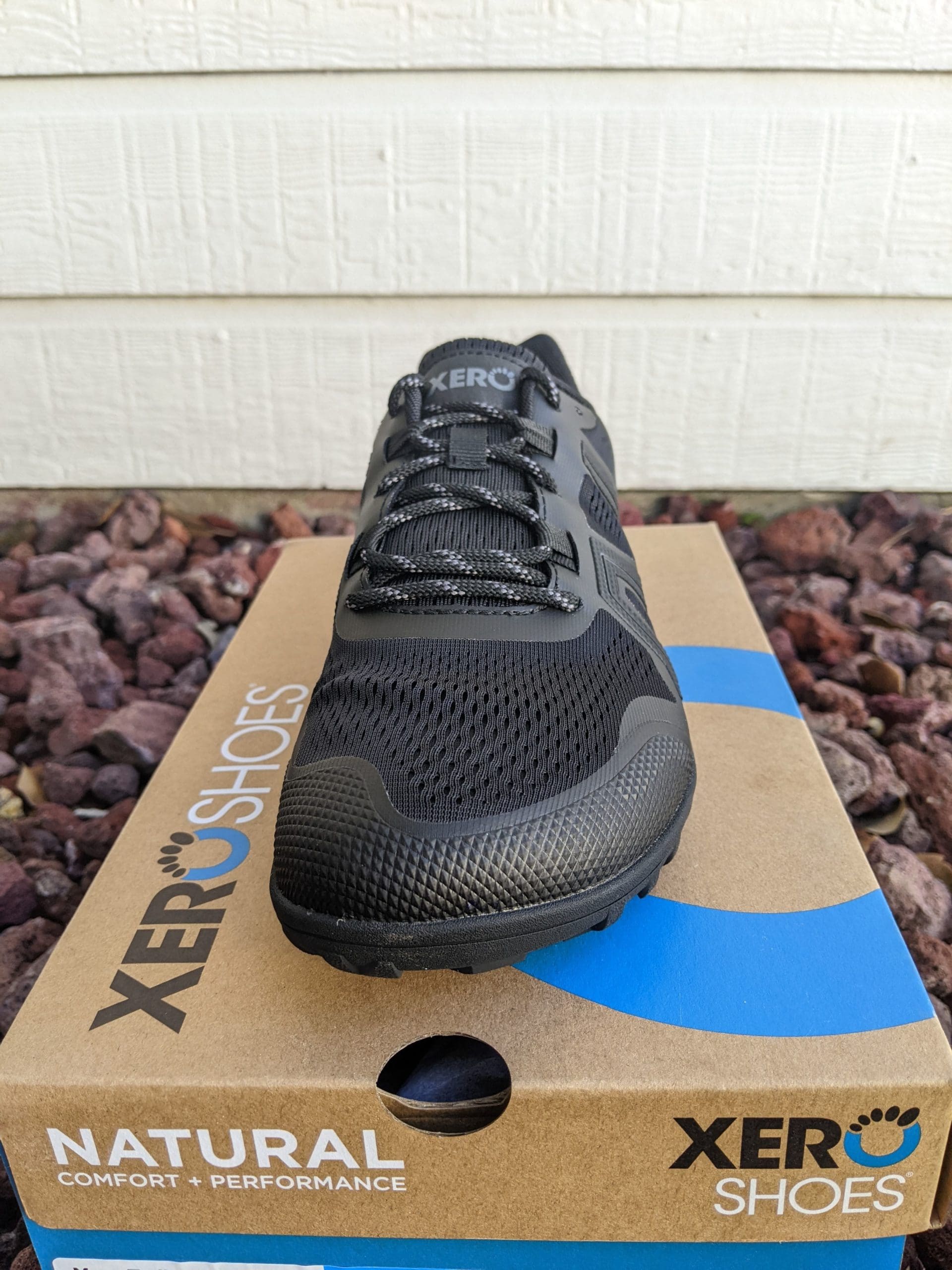
The flexibility of the ankle cuff adapts to all types of shapes and sizes. When it comes to minimal shoes, the saying “less is more” truly applies. This means the shoes have less structure and fewer materials, allowing them to mold perfectly to your foot. The Mesa Trail II is an excellent example, particularly in the ankle and heel cup area. The overlays provide just enough structure to prevent the materials from collapsing, allowing for a snug and secure fit, regardless of your ankle shape.
The toe box is wider than conventional brands but could be better for mega-toe spreaders! Xero Shoes are known for their unique shape that is perfect for most people but may not be the best fit for those with mega-toe spreaders or fan-shaped feet with wide-toe splay. If you fall under the latter category, consider Vivobarefoot instead. However, it is worth noting that 70-80% of people will find a perfect fit with Xero Shoes. In an ideal world, Xero Shoes could consider making their toe box more squared to accommodate a wider range of foot shapes.

I ran most of the Colorado Trail in the original Mesa Trail and a brutal 50km race in the Mesa Trail II. I’m confident in saying these are fantastic shoes. Having the freedom to flex my feet naturally allowed me to avoid nasty foot injuries and keep me moving day in and day out.
XeroShoes.com
Mesa Trail II
(45-day exchange period)
Each foot in this world is different. And that’s why finding the shoe that fits you is crucial.
I love Vivobarefoot because it serves a few-foot shapes Xero Shoes can’t cater to.
If you have a shallow foot, Vivobarefoot will do you well.
If you have a wide toe splay and a narrow heel, Vivobarefoot will do you well.

Pros
Cons
The 2.5mm base rubber and 4mm lugs mean they are super flexible and close to the ground. The minimal outsole is highly flexible, and place your foot close to the ground. Their outsole is perfect for dry or mildly wet conditions. Even when slippery, the 4mm lugs offer enough grip to keep you secure.
The upper material is made from recycled plastic, which remains relatively stiff. The stiffness of this trail shoe is both good and bad. It’s good because it keeps your foot in place while dancing around on rocks, but it can also cause sore spots if the fit is imperfect. The key is to avoid tightening the laces too much.
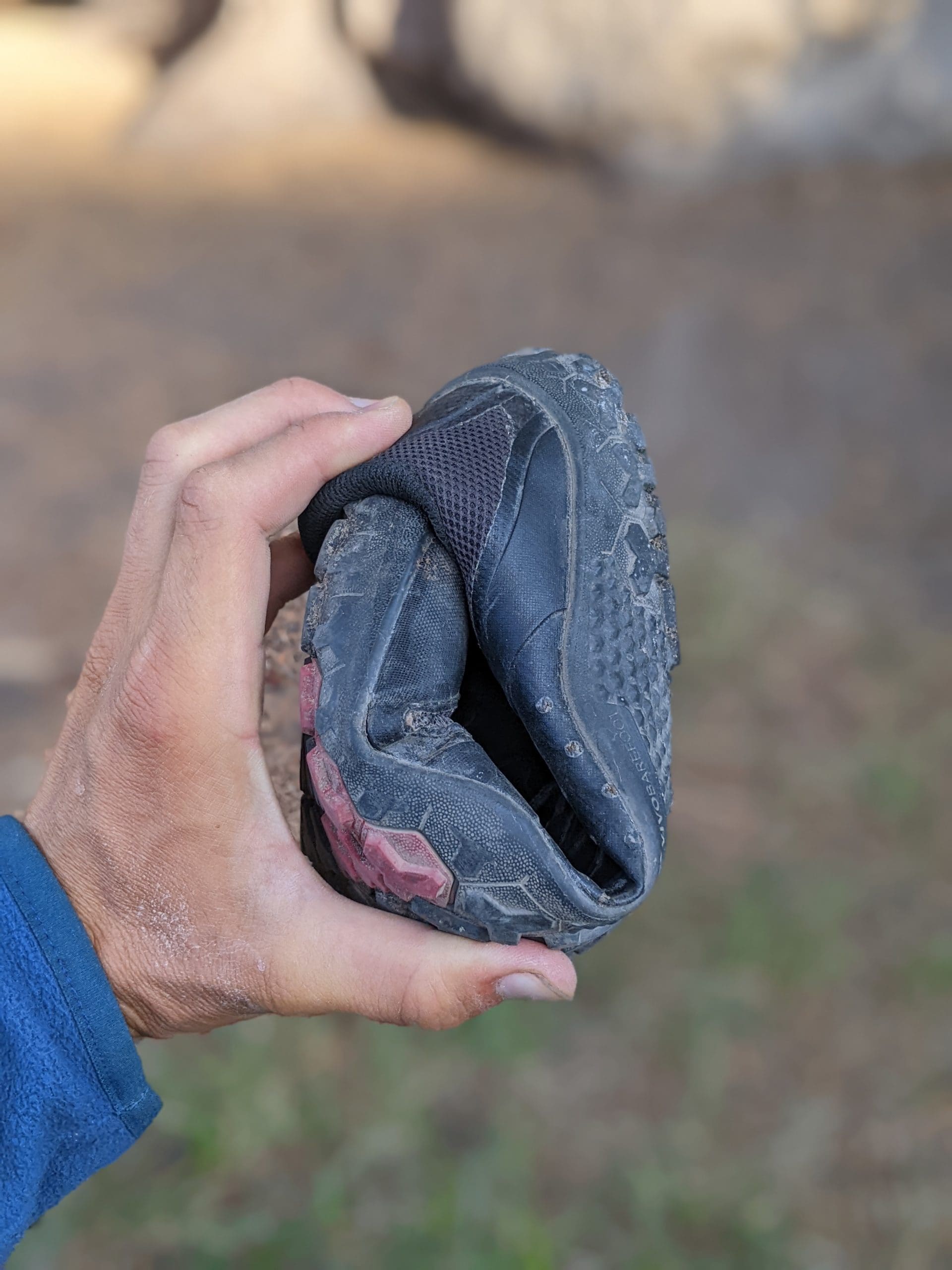
What is unique to Vivo is the ample room for the big toe. You’ll see almost no taper on the big toe side of the shoe, and it’s almost square, which may suit wide toe splays. That said, the little toe area tapers hard, so be careful if your small toe is as mobile as the big toe.
The midfoot and heel are narrower than Xero Shoes, suiting the traditional European market. Most European brands make narrower shoes than US ones. Vivobarefoot shoes fit snugly and have a shallower midfoot depth than other barefoot options, making them a great choice if you want a more fitted heel and midfoot.
Amazon.com
Primus Trail FG
(Free Returns)
Sometimes, you hit those wet, sloppy trails and just need some extra grip.
That’s when you turn to a shoe with large, aggressive outsole lugs.
One of my favorite options here is the Xero Shoes Scrambler Low.

Pros
Cons
The grippy outsole works wonders in many conditions. One thing I thought when I first tried these shoes was, finally, a minimal trail shoe I’d use in the UK! I.e., wet, muddy conditions. With 4mm lugs in a pattern resembling a bike tire, I found the ups and downs a breeze. This outsole is much better than any other Xero Shoes, and dare I say, even Altra!
For an aggressive trail shoe, the thicker stack height comes in handy. The stack height is said to be around 10mm, but when you add that to the more rigid outsole that the Michelin rubber provides, you’ll never have bruised feet again! I’ve done my fair share of trail running in super thin barefoot shoes, and when you hit that rock slightly, boy, it hurts! That’s why we sometimes need some stack height. And the Scrambler Low does that without getting ridiculous.

The material used in the upper is soft and very forgiving. If you’ve ever tried some original Altra Lone Peak models, you’ll know what I mean when I say the Scrambler Low has a skater shoe feel. Soft, flexible, and forgiving. I do not doubt that it’ll be comfortable for everyone out there! But that has drawbacks too. It does mean it can feel sloppy on technical descents.
They’re not the most wide option, but they’ll suit average-width toe splays or less. Look down at your bare feet. Do your toes naturally splay wider than your midfoot, maybe resembling a fan shape? If that’s you, try a different brand. But most of us find the area just behind our toes to be slightly wider, which means the Scrambler Low will be fine for you.

I recently ran a wet, sloppy 100km race in the UK with the Scrambler Low’s, and they were an awesome choice. I never once did a shoe or sock change. And that’s saying something.
XeroShoes.com
Scrambler Low
(45-day exchange period)
Sometimes, you have to opt for a shoe with a cushion.
Whether you’re attempting a distance you’ve never done before, or the trail is super aggressive, and you want to protect your feet. I get it.
When looking for cushion, I look to Altra’s most minimal option—the Superior 6.

Pros
Cons
The responsiveness is “poppy,” almost like I bounced forward with nothing holding me back. No, it’s not because an all-new “super-foam” is being used; it’s just less foam! And it’s denser. That helps with protection and ground feel while still maintaining some flexibility to allow your foot to activate and use a natural barefoot gait.
The grippy outsole worked well on wet rocks and sandy trails, but it’s not a mud shoe! The small lugs on the Superior indicate the shoe’s intended conditions. I’d say it’s a typical Colorado Summer shoe. Dry with the occasional wet rock. And in those instances, the outsole works wonders. Don’t expect to take this on a sloppy cross–country course any time soon!
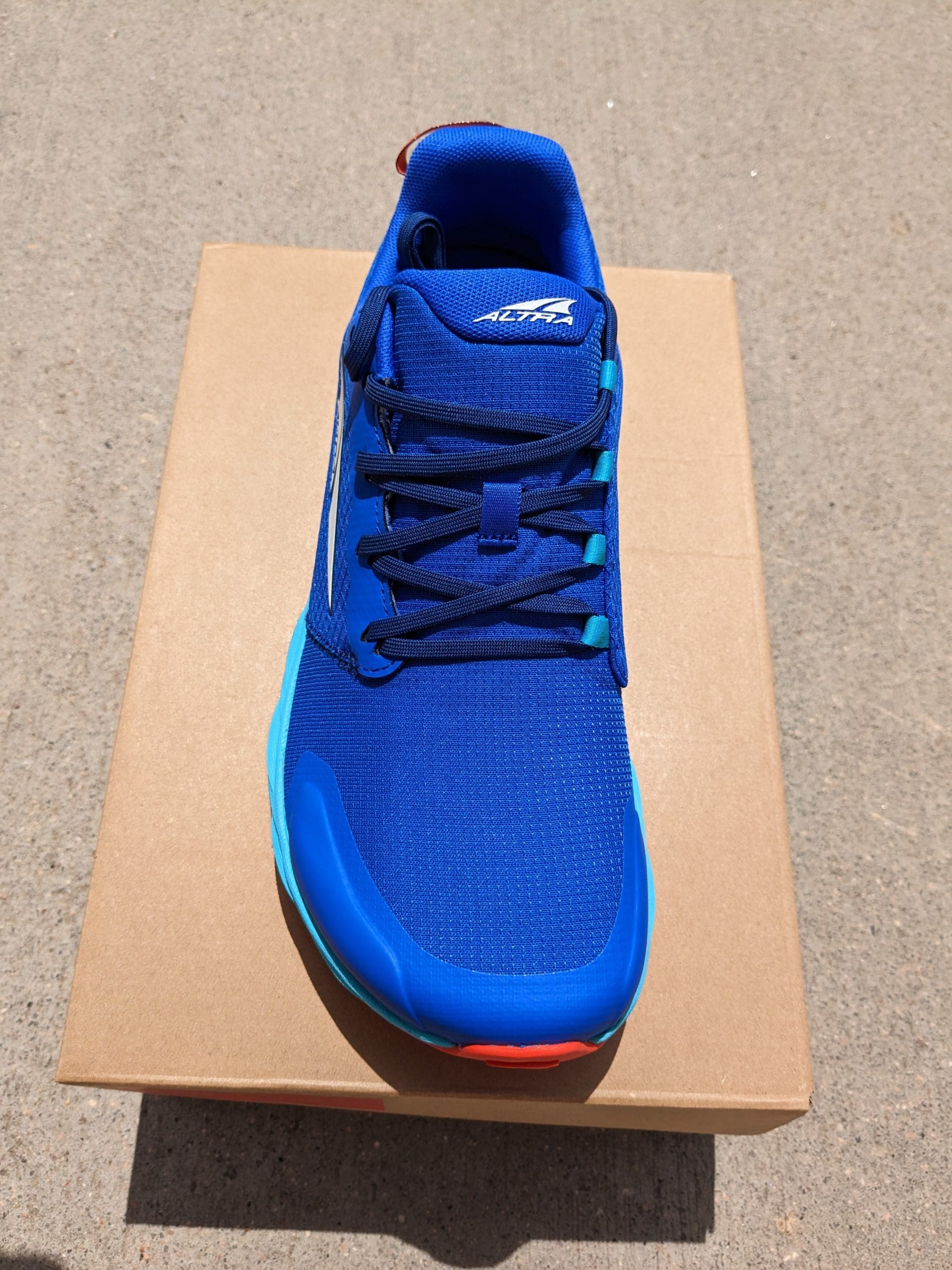
The forefoot is nice and wide and beautifully squared towards the big toe. Altra’s foot-shaped toebox still exists! It’s wide enough for super toe splayers and even fits my stupid bulbous big toe. 🙂 So yeah, it’s wide enough for most of you out there. The taper on the little toe is also generous so that it will fit anyone with a fan-shaped foot too.
As with many Altra shoes, the shoe isn’t all that deep. If you have a lot of volume in your foot, you may have felt a lot of pressure on the top of the foot in Altra’s. For me, the Superior 6 is no different. I felt a lot of pressure over the top of my feet because there was not enough depth for me. So my super sneaky trick is to replace the insole with something thinner, like a Xero Shoes insole.

For me, the Altra Superior is a recovery shoe or a long-distance racer. It’s long been a favorite of mine and will be far into the future.
Amazon.com
Superior 6
(45-day exchange period)
Not every trail shoe has to be a shoe.
There are many people out there who run in sandals, even on the trail.
I’ve been known to do this in the past, and whereas I prefer a closed-shoe option, having the freedom and the quick-drying option is pretty cool.
For me, Earther runners have worked the best up to now.
Pros
Cons
The stiffer straps help keep the sandal in place, although it takes a while to get the fit right. Finding a perfect fit took me a solid 2 weeks of micro-adjustments. It’s not easy. But now I can go all day without straps rubbing. When choosing a sandal, I’d suggest one with a toe strap like the Earth Runners because it stops any side-to-side motion of the outsole.
The outsole isn’t a trail option, but it’ll work for dry conditions. I wear these sandals for everything. Casual, travel, road running, trail running. But the one time I wouldn’t use them would be for wet trails. The tread isn’t entirely made for mud; you’ll have a slippy time.
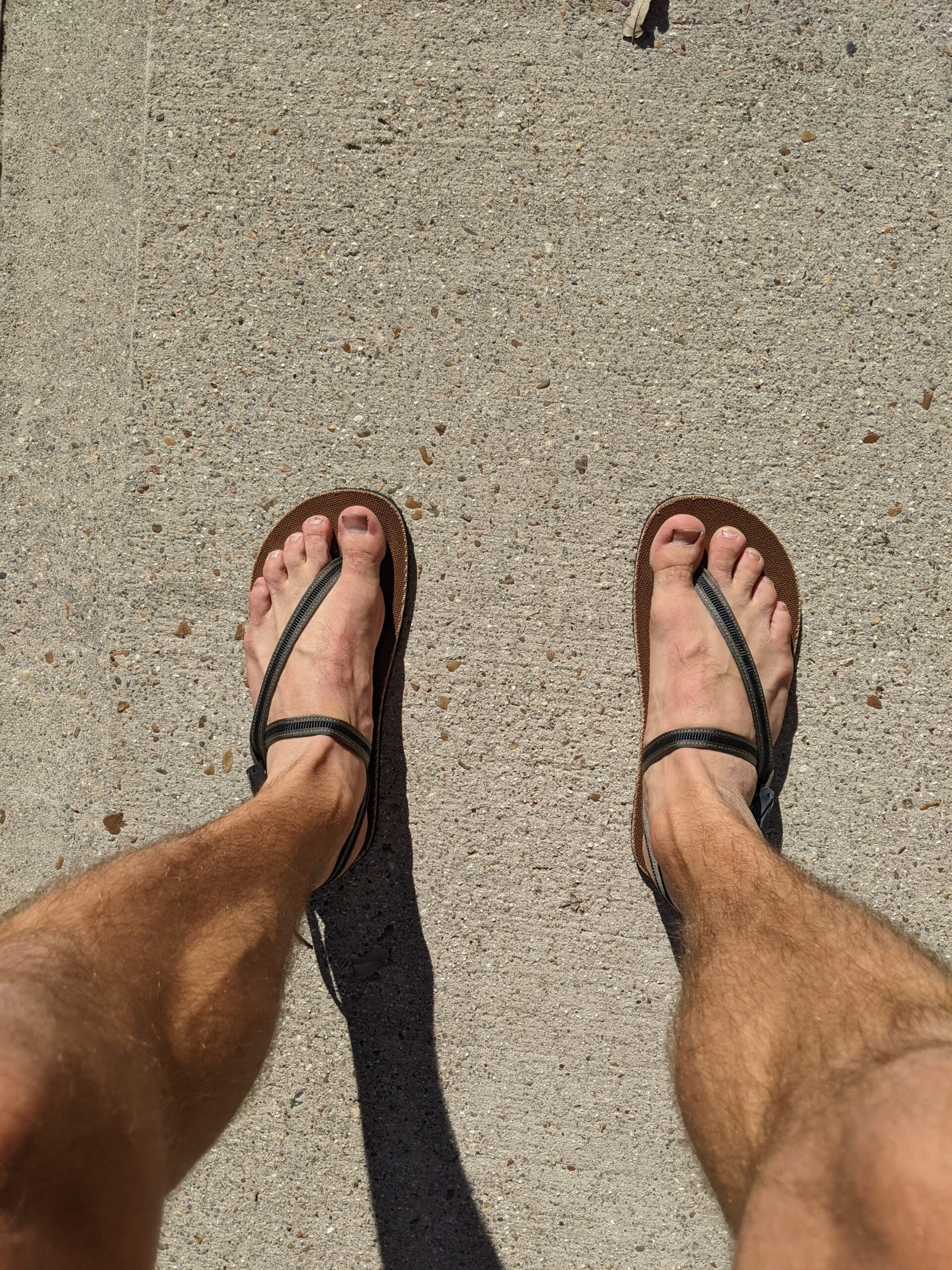
Having no upper allows your feet to stay cool in the heat. Wearing sandals can be beneficial for two reasons. Firstly, when your feet become hot, they tend to swell, which can cause discomfort and tightness in regular shoes. However, with sandals, there is no such issue as nothing is constricting your feet. Secondly, wearing sandals allows your feet to cool optimally since there is no barrier between your feet and the outside world. So, it is a great option for keeping your feet comfortable and cool during hot weather.
Because the sandal has less structure, it forces you to run with a better barefoot gait. For this reason, I love to use sandals for barefoot training. Any material around the foot may add some support where it’s not wanted; a sandal avoids this. Only the outsole underfoot influences your barefoot gait, so depending on the surface you run, it’s possible to opt for a thin outsole to enhance your barefoot feel further!
EarthRunners.com
Circadian
(30-day returns)
At one point or another, I’ve had all these minimal trail shoes in my rotation and will happily throw on any pair in the right situation.
But secretly… My favorite is the Mesa Trail II. Shhh, don’t tell Vivobarefoot or Altra. 🙂
I’m confident that these 5 shoes are the best minimalist trail running shoes on the market.
So, how do you choose which shoe is right for you?
- Choose a brand and model that fits your foot.
- Regular width, with a deep foot.
- Wide forefoot with a shallow midfoot.
- Choose a model that suits the terrain you run on.
- Dry soft terrain
- Dry, rocky conditions
- Muddy Conditions
Want to dive deeper into any of these shoes?
Why not check out the full reviews!
Xero Shoes Mesa Trail II Review
Vivobarefoot Primus Trail FG Review


